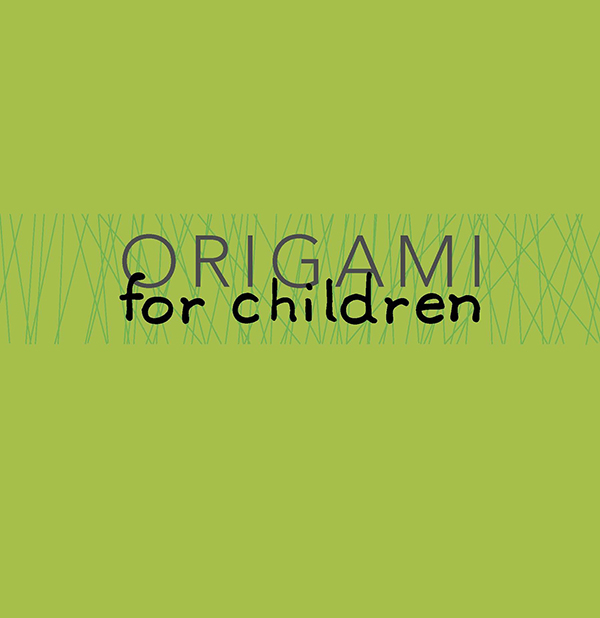
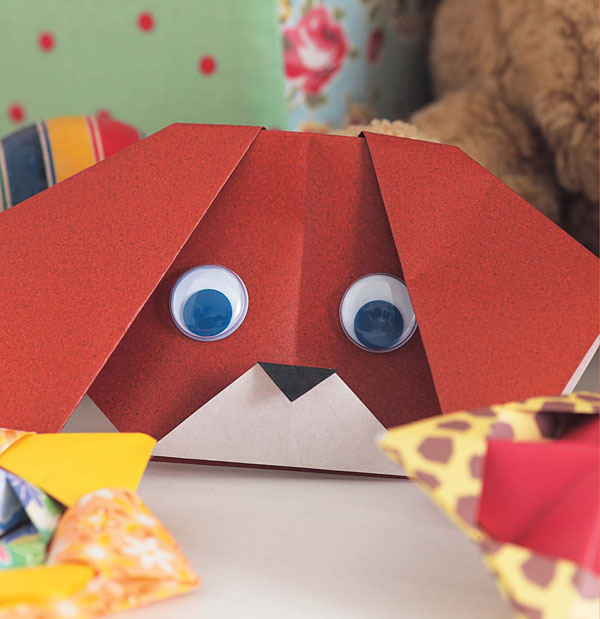 ORIGAMI for children 35 easy-to-follow step-by-step projects MARI ONO AND ROSHIN ONO
ORIGAMI for children 35 easy-to-follow step-by-step projects MARI ONO AND ROSHIN ONO  Published in 2009 by CICO Books An imprint of Ryland Peters & Small Ltd
Published in 2009 by CICO Books An imprint of Ryland Peters & Small Ltd
| 2021 Jockeys Fields London WC1R 4BW | 519 Broadway, 5th Floor New York, NY 10012 |
www.cicobooks.com US: 10 9 8 7 UK: 10 9 8 7 Text Mari and Roshin Ono 2009 Design and photography CICO Books 2009 The authors moral rights have been asserted. All rights reserved. No part of this publication may be reproduced, stored in a retrieval system, or transmitted in any form or by any means, electronic, mechanical, photocopying, or otherwise, without the prior permission of the publisher. A CIP catalog record for this book is available from the Library of Congress and the British Library. eISBN: 978-1-908862-32-7 ISBN-13: 978 1 906525 80 4 Printed in China Editor: Robin Gurdon Designer: Claire Legemah Step Photography: Debbie Patterson Style Photography: Carolyn Barber Stylist: Rose Hammick

For digital editions visit www.cicobooks.com/apps.php
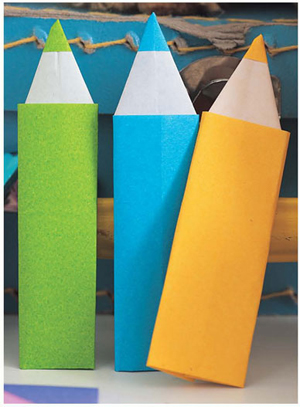
Contents

Origami, the art of folding paper, has long been a traditional activity for Japanese children. Most learn the techniques from their parents and grandparents, or perhaps their kindergarten teacher, but however they learn they all soon become absorbed in the magic of origami.
This book will show you how to fold classic origami designs using Japanese origami (paper), both with beautiful, traditional chiyogami motifs and in modern designs. Although origami is over 100 years old, exciting designs and papers continue to be developed. This book introduces the latest of both as well as the traditional techniques. Your children may feel that some origami techniques are difficult but this will only be temporary. As they discover other models using similar techniques they will use their experience to improve their skills. It will soon become clear that what at first seems complicated, is just a combination of basic techniques.
At the origami workshops I have held, many participating children were surprised by origami, saying it is just like a magic! It is also highly appreciated by parents because, unlike electronic games, it helps develop concentration and gives children a feeling of accomplishment. Another great advantage of origami is the ability for you and your children to enjoy practicing it anywhere you can fold a piece of paper. Allow yourselves to relax with friends as a single piece of paper transforms itself into a balloon, animal, or airplane in front of your eyes. 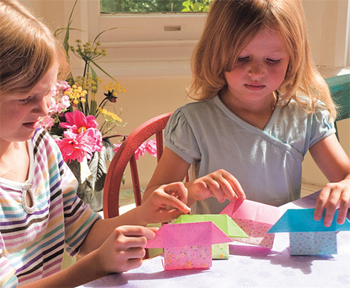
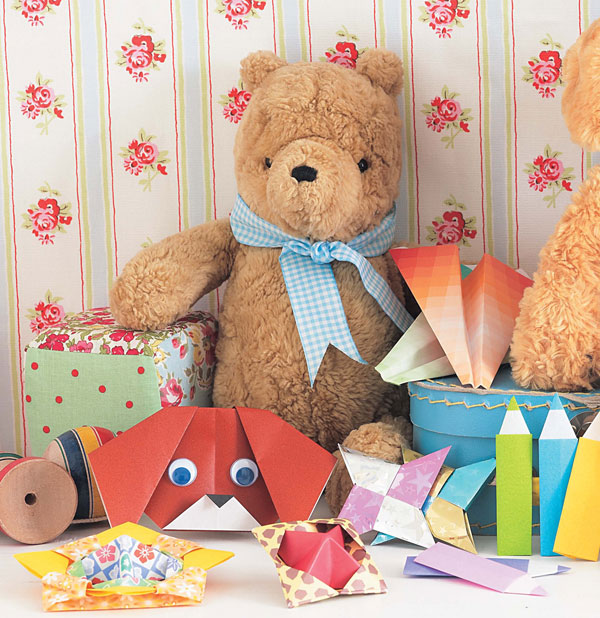
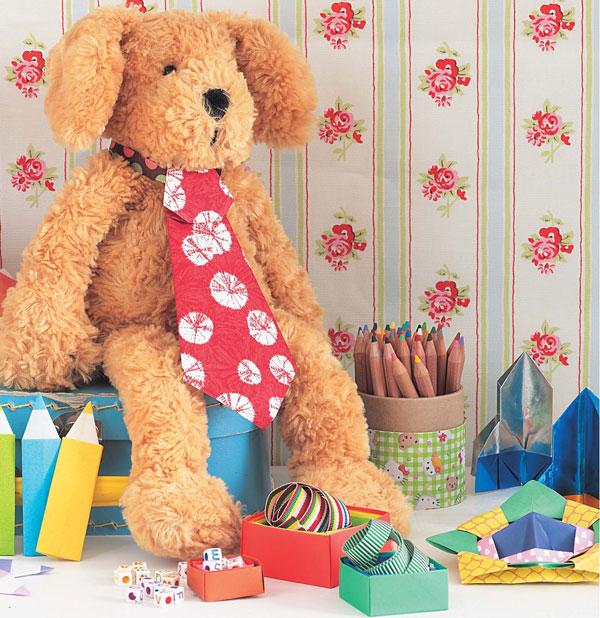 In this book I have introduced a series of toys made using Japanese traditional designs, a range of practical items that are useful for a childrens party, and a number of models of a more modern design, such as a zebra, a giraffe, plus some cakes and other tasty foods. Also, there are the boats, airplanes, and rockets, which all boys love. Now its time to experience an exciting world filled with magical origami!
In this book I have introduced a series of toys made using Japanese traditional designs, a range of practical items that are useful for a childrens party, and a number of models of a more modern design, such as a zebra, a giraffe, plus some cakes and other tasty foods. Also, there are the boats, airplanes, and rockets, which all boys love. Now its time to experience an exciting world filled with magical origami! 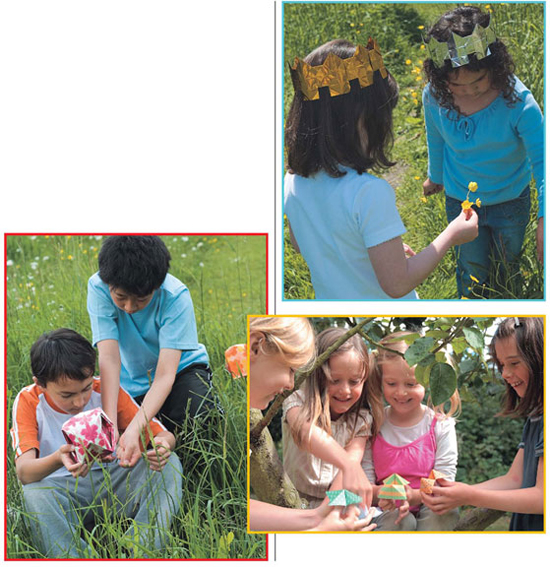 PAPER The word origami actually has two meanings in Japanese: it is both the act of folding paper to make models or objects, and the particular type of square paper used itself.
PAPER The word origami actually has two meanings in Japanese: it is both the act of folding paper to make models or objects, and the particular type of square paper used itself.
To fold in Japanese is ori while the general translation of paper is kami, and when joined together the two become origamiany type of paper that can be folded. You can try folding paper of almost any kindfrom office paper to wrapping paperthough tissue-paper is unsuitable because of its lack of strength. You can purchase all types of Japanese origami papers from the suppliers listed on . Here is a selection of some of the origami papers I have used in this book. 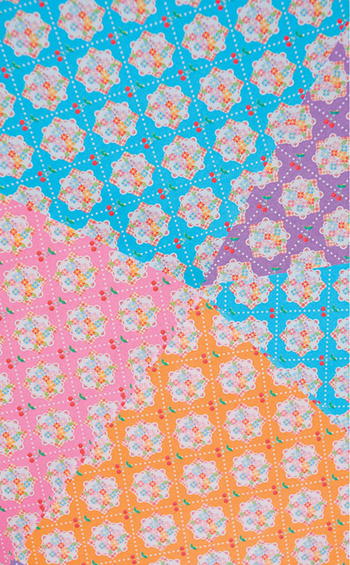
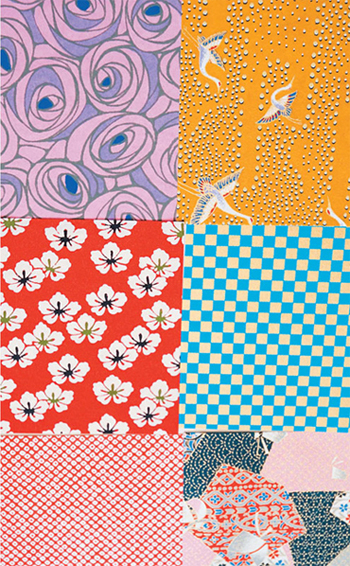 ). Opposite: Some of the simplest papers are the prettiest, and using origami of the same design in different color combinations can be a great way of making sets of a similar design.
). Opposite: Some of the simplest papers are the prettiest, and using origami of the same design in different color combinations can be a great way of making sets of a similar design.
I used paper like this for the Hana Kago Flower Basket () so that I could make a group of baskets that were all slightly different to each other.  ORIGAMI ESSENTIAL ADVICE 1. Use a table. It sounds simple, but it is so effective. 2. Make sure your folds are accurate at the points.
ORIGAMI ESSENTIAL ADVICE 1. Use a table. It sounds simple, but it is so effective. 2. Make sure your folds are accurate at the points.
This is the key to achieving beautiful origami. 3. Make firm folds. This will help the origami to stay in place and give you a clean finish. 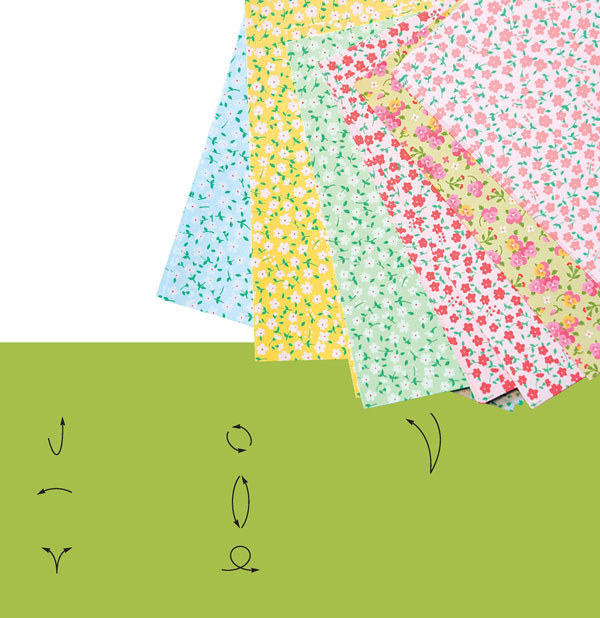 ARROWS Fold Fold the part of the paper shown in this direction Folding direction Fold the entire paper over in this direction Open out Open out and refold the paper in the direction shown Change the position Spin the paper 90 in the direction of the arrows Change the position Spin the paper through 180 Turn over Turn the paper over Make a crease Fold the paper in the direction of the arrow then open it out again
ARROWS Fold Fold the part of the paper shown in this direction Folding direction Fold the entire paper over in this direction Open out Open out and refold the paper in the direction shown Change the position Spin the paper 90 in the direction of the arrows Change the position Spin the paper through 180 Turn over Turn the paper over Make a crease Fold the paper in the direction of the arrow then open it out again 
 THE projects
THE projects 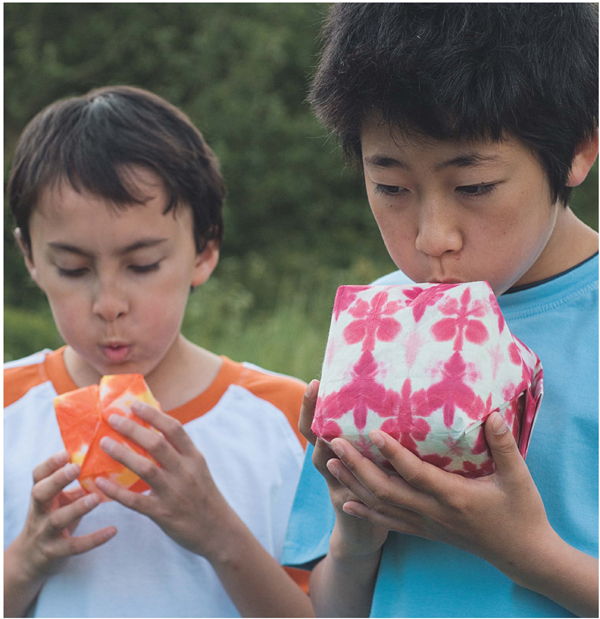
 This is one of the most magical of traditional origami modelsa sheet of paper folds flat before being inflated with a single breath into a three-dimensional form to become a toy ball.
This is one of the most magical of traditional origami modelsa sheet of paper folds flat before being inflated with a single breath into a three-dimensional form to become a toy ball.  You will need 12 in (30 cm) sheet of square paper
You will need 12 in (30 cm) sheet of square paper 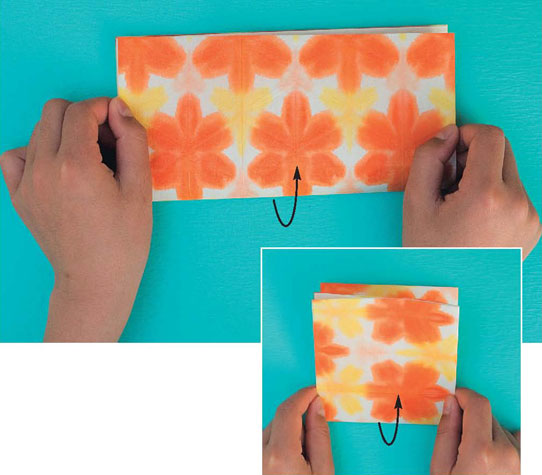
Next page
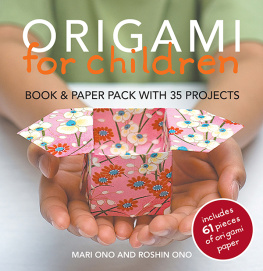
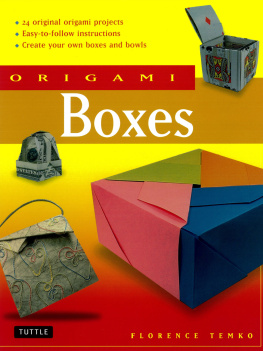


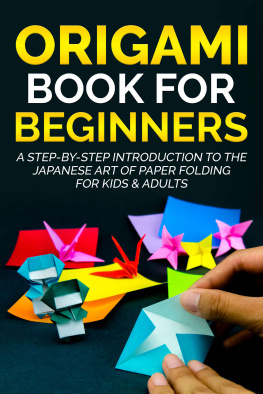
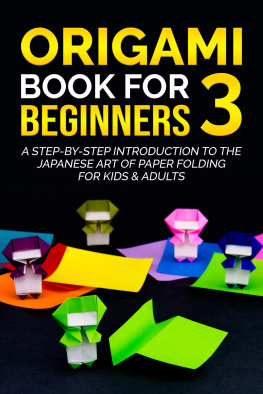
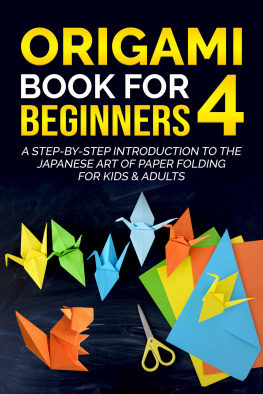
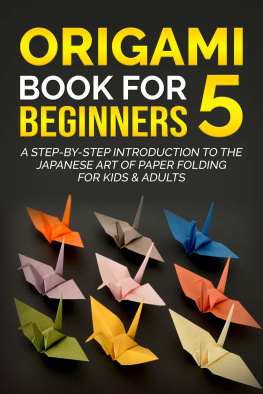
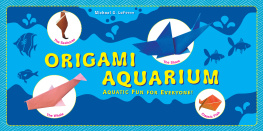
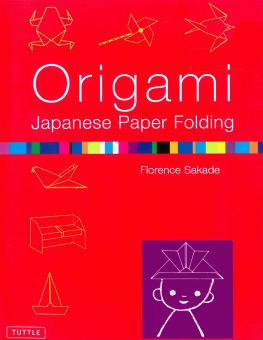
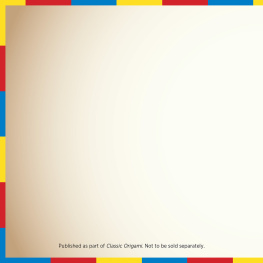
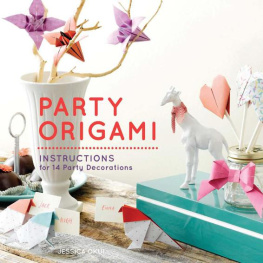
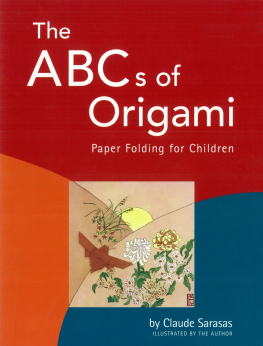

 ORIGAMI for children 35 easy-to-follow step-by-step projects MARI ONO AND ROSHIN ONO
ORIGAMI for children 35 easy-to-follow step-by-step projects MARI ONO AND ROSHIN ONO  Published in 2009 by CICO Books An imprint of Ryland Peters & Small Ltd
Published in 2009 by CICO Books An imprint of Ryland Peters & Small Ltd For digital editions visit www.cicobooks.com/apps.php
For digital editions visit www.cicobooks.com/apps.php  Contents
Contents  Origami, the art of folding paper, has long been a traditional activity for Japanese children. Most learn the techniques from their parents and grandparents, or perhaps their kindergarten teacher, but however they learn they all soon become absorbed in the magic of origami.
Origami, the art of folding paper, has long been a traditional activity for Japanese children. Most learn the techniques from their parents and grandparents, or perhaps their kindergarten teacher, but however they learn they all soon become absorbed in the magic of origami. 

 In this book I have introduced a series of toys made using Japanese traditional designs, a range of practical items that are useful for a childrens party, and a number of models of a more modern design, such as a zebra, a giraffe, plus some cakes and other tasty foods. Also, there are the boats, airplanes, and rockets, which all boys love. Now its time to experience an exciting world filled with magical origami!
In this book I have introduced a series of toys made using Japanese traditional designs, a range of practical items that are useful for a childrens party, and a number of models of a more modern design, such as a zebra, a giraffe, plus some cakes and other tasty foods. Also, there are the boats, airplanes, and rockets, which all boys love. Now its time to experience an exciting world filled with magical origami!  PAPER The word origami actually has two meanings in Japanese: it is both the act of folding paper to make models or objects, and the particular type of square paper used itself.
PAPER The word origami actually has two meanings in Japanese: it is both the act of folding paper to make models or objects, and the particular type of square paper used itself.
 ). Opposite: Some of the simplest papers are the prettiest, and using origami of the same design in different color combinations can be a great way of making sets of a similar design.
). Opposite: Some of the simplest papers are the prettiest, and using origami of the same design in different color combinations can be a great way of making sets of a similar design. ORIGAMI ESSENTIAL ADVICE 1. Use a table. It sounds simple, but it is so effective. 2. Make sure your folds are accurate at the points.
ORIGAMI ESSENTIAL ADVICE 1. Use a table. It sounds simple, but it is so effective. 2. Make sure your folds are accurate at the points. ARROWS Fold Fold the part of the paper shown in this direction Folding direction Fold the entire paper over in this direction Open out Open out and refold the paper in the direction shown Change the position Spin the paper 90 in the direction of the arrows Change the position Spin the paper through 180 Turn over Turn the paper over Make a crease Fold the paper in the direction of the arrow then open it out again
ARROWS Fold Fold the part of the paper shown in this direction Folding direction Fold the entire paper over in this direction Open out Open out and refold the paper in the direction shown Change the position Spin the paper 90 in the direction of the arrows Change the position Spin the paper through 180 Turn over Turn the paper over Make a crease Fold the paper in the direction of the arrow then open it out again 
 THE projects
THE projects 
 This is one of the most magical of traditional origami modelsa sheet of paper folds flat before being inflated with a single breath into a three-dimensional form to become a toy ball.
This is one of the most magical of traditional origami modelsa sheet of paper folds flat before being inflated with a single breath into a three-dimensional form to become a toy ball.  You will need 12 in (30 cm) sheet of square paper
You will need 12 in (30 cm) sheet of square paper 